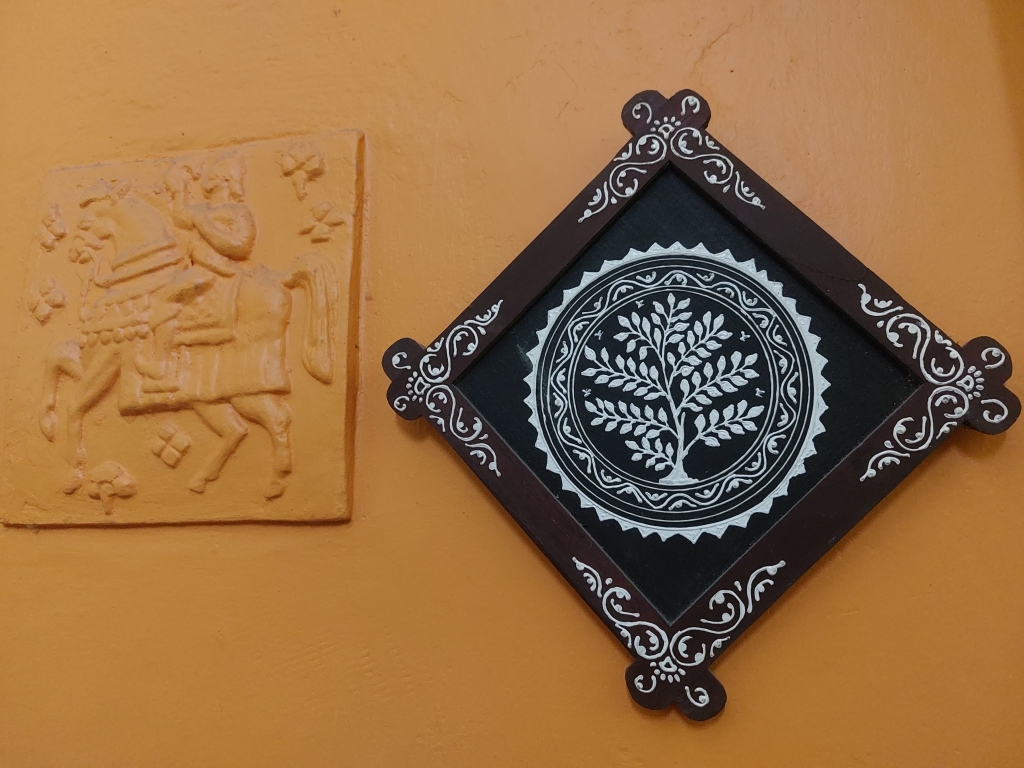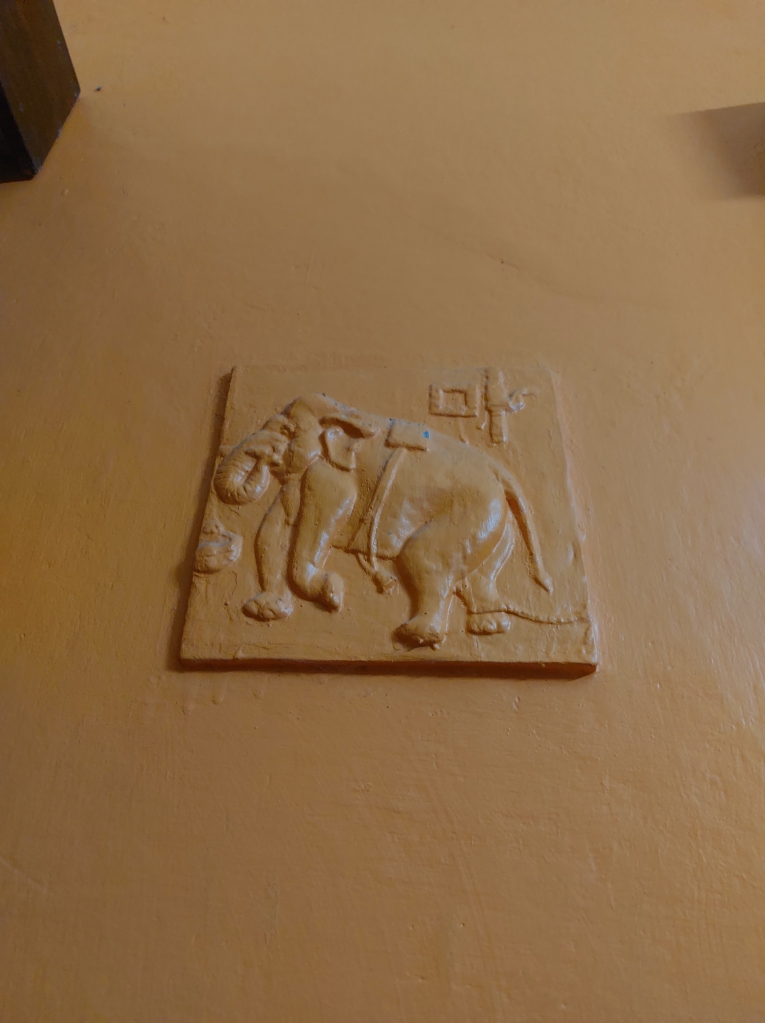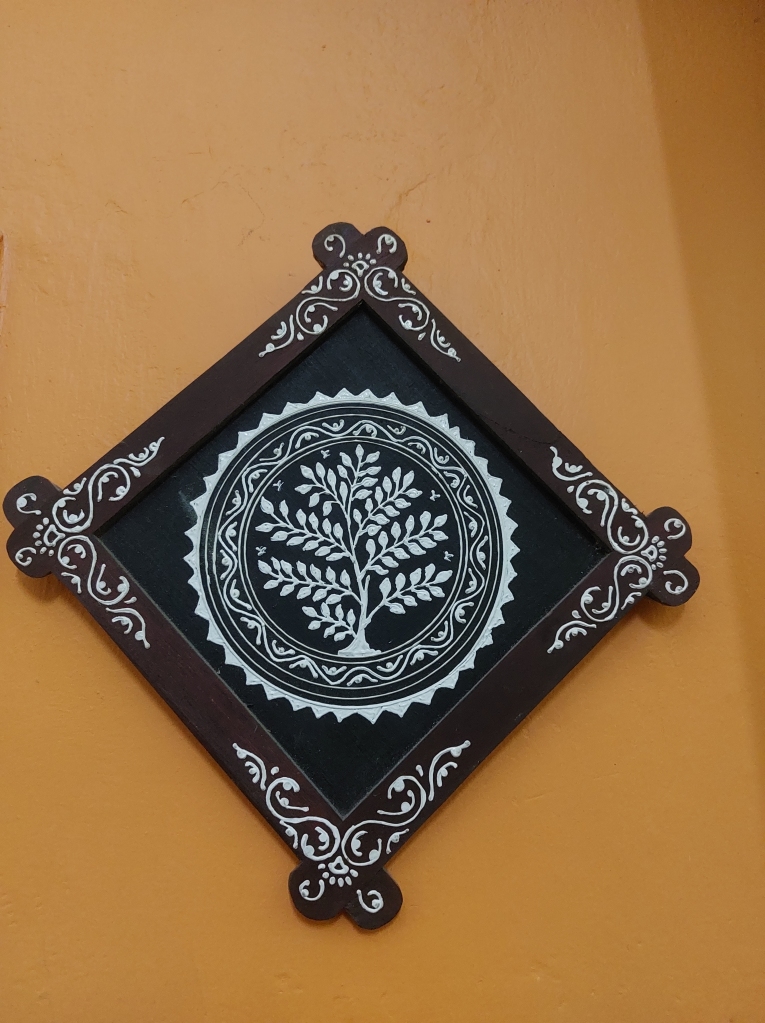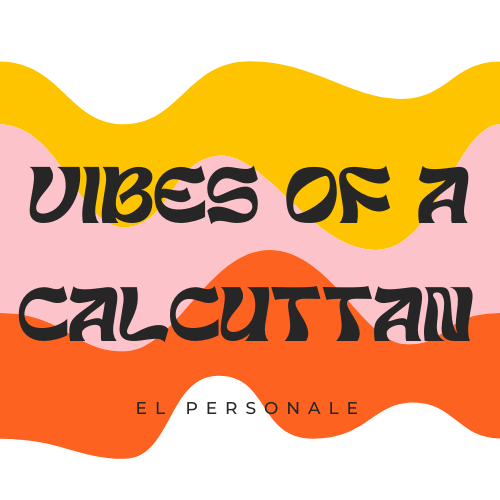My time here at Kaviguru’s favorite place has been so enchanting. One of my friends lives here, and I frequently visit her. And I can’t just believe the beauty of all the paintings and artwork that adorn her walls! I keep staring at them for hours at a time and feel something within me melt away. It is a boon to be in the presence of such art and culture, and I am enjoying my time diving into the vast reserve of folk traditions that is characteristic of this place. Here are some pictures of those art pieces, accompanied by a brief description of the same.



Santiniketan is like an open art museum, wherever you go, you see art and culture thriving and giving life to this old place. Everyone’s homes are a testimony of the rich heritage it possesses. The wall hangings are made by local artisans, who use the Santhali style of painting. An ancient tribe, the Santhals have lived in this part of India (West Bengal, Jharkhand and Bihar) for more than fifteen hundred years, and have always painted the walls of their huts in self-expression for any ceremony or festival. They usually worship a stone by accepting it as a formless deity, sing and dance with a vivid portrayal of their day-to-day experiences, and nowadays make a living by portraying their ethnic roots for interested tourists and researchers at Visva-Bharati.


Ramkinkar Baij, the famous Santhal artisan and sculptor, founded the artists’ colony near Santiniketan, where several such artists created and promoted their tribal art. His sculptures were considered novel during the early 20th century, and throng the gardens at Rabindra Bhavan Museum. Nandalal Basu, a contemporary art teacher at Kala Bhavana at Santiniketan, had a key role in making this form of art famous and desirable while being constantly supported by no other than the Kaviguru himself. Later, another impressionist British-style painter, Jamini Roy, brought the Vaishnavite, Baul, and Santal traditions into detailed visibility and precision at Santiniketan. Jamini Roy was a modernist who later rejected the Western art he was trained in and gave rise to a traditional Bengali art form of today with his unique ‘flat’ style which drew heavy inspiration from the Orient.




Santhali paintings are what define Santiniketan visually. This place is one of the first strongholds that promoted local development and economy, in the face of the harsh British forces. In a world mired by colonialism and suspicion, Santiniketan offered a way to discover the traditional Indian roots and cultivate its uniqueness with passion. On top of that, the artisans benefit from the sales of their work boosting their local economy. There is always something to learn and experience from Santhalis. Their art is to be savored, and understood – for this is literally the record of the lifestyle of an entire community – to be admired, protected, nurtured, and lived again and again.


Woww!! such a nice writing ❤️…. Will follow this from now onwards.
LikeLike